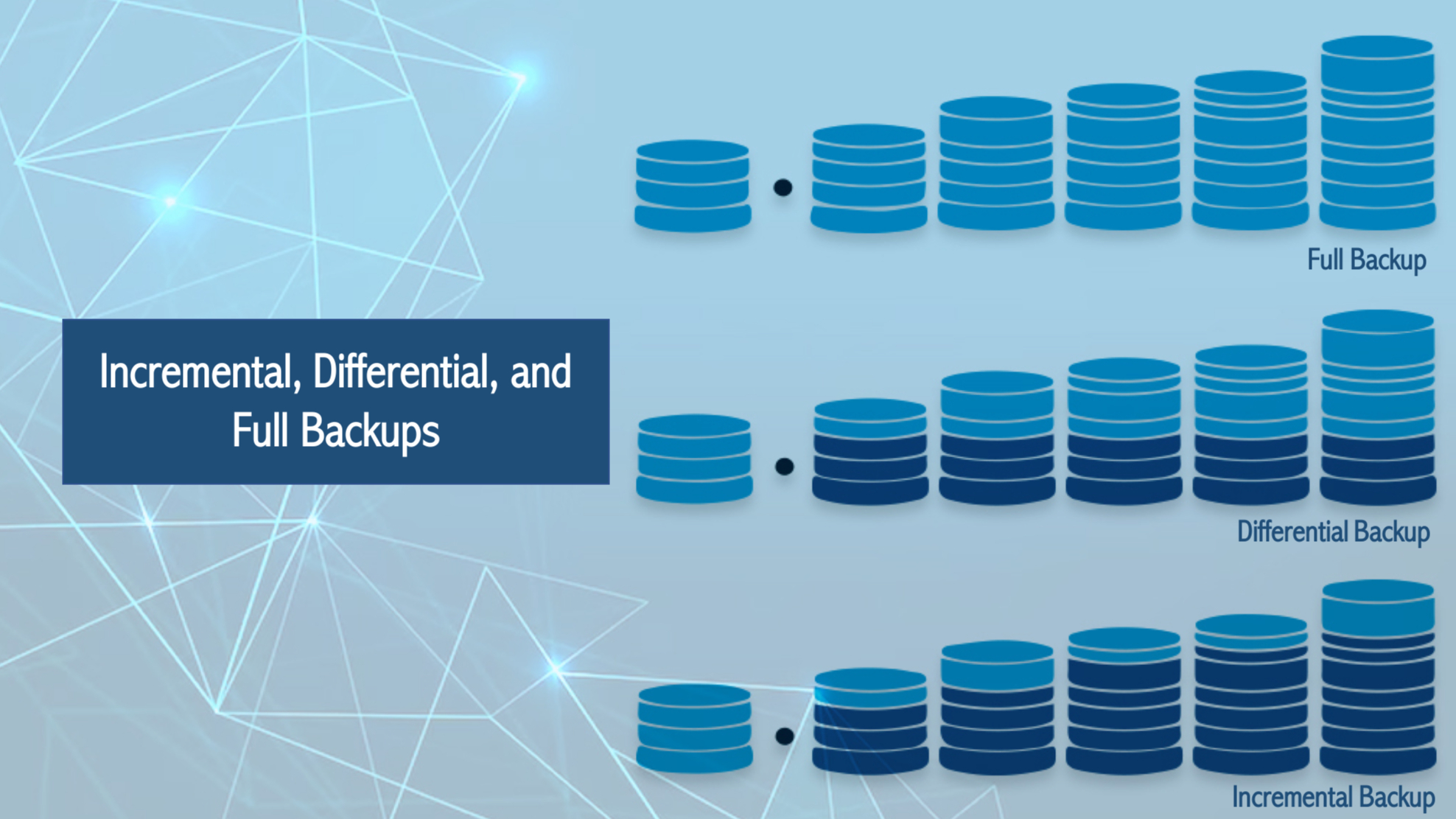Data backup is an essential practice in the world of information technology. It ensures that valuable data is protected and can be restored in the event of data loss or system failure. There are several backup strategies available, including incremental, differential, and full backup. Each method has its own advantages and considerations, making it important to understand the differences between them. In this article, we will explore the characteristics and benefits of each backup type.
What are the three types of backups?
There are three primary data backup strategies — full backup, differential backup, and incremental backup.
- Full Backups comprise entire data backup sets, regardless of already existing backups or data change circumstances.
- Differential Backups comprise data files that have changed since the most recently completed full backup.
- Incremental Backups comprise data files that have changed since the most recently completed incremental backup.
Let's understand the backup process behind all 3 approaches in detail.
1. Full Backups: A full backup is the most straightforward and comprehensive type of backup. It involves creating a copy of all the data and files in a given system or storage device. In other words, every bit of data is copied during each backup operation. Full backups provide a complete snapshot of the data at a specific point in time. This means that in the event of data loss or system failure, the entire system can be restored using a single full backup.
Advantages:
- Complete restoration: Full backups allow for a complete restoration of the system to its previous state.
- Independence: Each full backup is self-contained and does not depend on other backups for restoration.
- Simplicity: Full backups are easy to understand and manage since they involve copying all data.
Considerations:
- Time and resources: Full backups require more time and storage resources since all data needs to be copied during each backup operation.
- Network bandwidth: The transfer of large amounts of data during full backups can put a strain on network bandwidth.
2. Incremental Backups: Incremental backup involves backing up only the data that has changed since the last backup, regardless of the backup type. It creates a backup of the files that have been modified or added since the last backup, regardless of whether it was a full, incremental, or differential backup. In this method, the initial backup is a full backup, and subsequent backups are incremental, capturing only the changes made since the last backup.
Advantages:
- Faster backups: Incremental backups are generally faster than full backups since they only copy changed or new data.
- Less storage space: Incremental backups require less storage space than full backups because they only capture changes.
- Less network bandwidth: Incremental backups transfer smaller amounts of data, resulting in less strain on network bandwidth.
Considerations:
3. Differential Backups: Differential backup is similar to incremental backup in that it captures only the changes made since the last backup. However, unlike incremental backups, differential backups always capture the changes made since the last full backup. In other words, each differential backup includes all changes made since the last full backup, regardless of any previous differential backups.
Advantages:
- Faster restoration: The restoration process with differential backups is faster than with incremental backups since it only requires retrieving the most recent full backup and the latest differential backup.
- Data integrity: Differential backups provide a consistent snapshot of the data at different points in time, making it easier to verify data integrity.
Considerations:
- Increasing backup size: As more differential backups are created, the size of each backup gradually increases because they capture all changes since the last full backup.
- Longer backup time: Differential backups take longer to create than incremental backups since they copy all changes since the last full backup.
Choosing the Right Backup Strategy:
In today's digital age, businesses heavily rely on technology and data to operate efficiently. However, unforeseen events such as natural disasters, cyber-attacks, or system failures can disrupt operations and lead to significant financial and reputational losses. To mitigate the impact of these disruptions, businesses need to develop a robust business strategy that includes the concepts of Maximum Tolerable Period of Disruption (MTPD), Recovery Point Objective (RPO), Recovery Time Objective (RTO), and Work Recovery Time (WRT). The business has to assess how these elements can be incorporated into a comprehensive business risk strategy.
The choice of backup strategy depends on various factors such as the size of the data, available storage resources, network bandwidth, and the desired restore time objective (RTO). Full backups are suitable for small datasets or when storage resources and bandwidth are not limiting factors. Incremental backups are ideal for large datasets where storage space and backup time are critical. Differential backups strike a balance between the two, providing a quicker restoration time while using less storage space than full backups.
Understanding the differences between incremental, differential, and full backup strategies is crucial for designing an effective data backup plan. Each method offers its own benefits and considerations, allowing organizations to tailor their backup approach to their specific needs. By selecting the right backup strategy, businesses can ensure the safety and recoverability of their valuable data.

